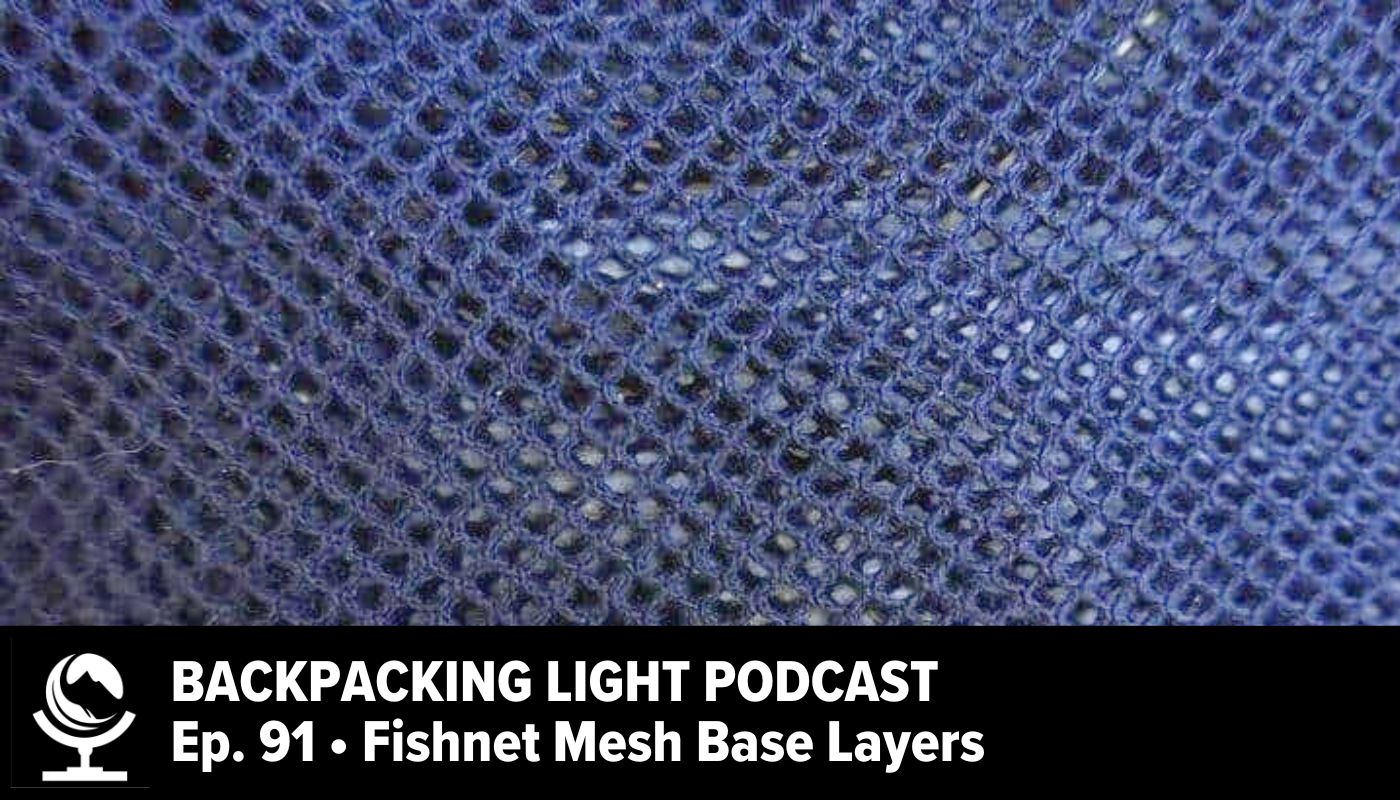Episode 91 | Fishnet Mesh Base Layers
Episode Sponsor

This episode of the Backpacking Light Podcast is sponsored by BRYNJE, manufacturer of premium fishnet (open mesh) base layer apparel made with Schoeller polycolon and merino wool. Backpacking Light podcast listeners can enjoy 10% off with the coupon code BPL10 at brynjeusa.com.
Listen
Summary
In today’s episode of the Backpacking Light podcast we’re going to talk about fishnet base layers and the Swedish ideal of lagom.

In this Episode:
What’s New at Backpacking Light?
- November 8th Newsletter – Lagom & Tenkara
- Essay by Jackie We on lagom and adventure travel
- Sign up for the Backpacking Light Email Newsletter.
- We’ve updated both the REI gear guide and the Publisher’s Gear Guide for the winter season!
- Become a Backpacking Light Member.
- Follow us elsewhere on the web: YouTube | Instagram | Facebook
Interview with Jeff Jacobs of Brynje USA
Our guest this week is Jeff Jacobs of Brynje USA. Jeff’s dad was an Olympic nordic ski racer at the Oslo Olympics 1952, and at the time became enamored with the Scandinavian idea that a mesh, or fishnet-style base layer, was the optimal fabric design for wearing next to your skin in cold conditions during high exertion activities. Mr. Jacobs started importing Norwegian fishnet base layers to the United States, and his son, Jeff, picked up the torch and expanded the market through Brynje’s USA division. Jeff joins me today where we talk about the fundamental design of Brynje fishnet, the role of fiber types, and how fishnet is incorporated into layering systems for both cold and warm weather hiking and backpacking.
Submit a Tip, Trick, or Question
Share your tips, tricks, and questions on the podcast – submit it via email to [email protected].
Featured Products
Links, Mentions, and Related Content
- Link: Clothing Systems for Outdoor Activities
- Gear: Brynje Thermo Mesh Shirt Review
- Gear Testing / Wilderness Skills: Just Say No To Wicking: Non-Traditional Base Layers Based on a Next-to-Skin Fishnet Model
How to Subscribe
- Apple Podcasts | Spotify | RSS
More Episodes
Credits
- Executive Producer - Backpacking Light; Show Director and Host - Ryan Jordan; Producer - Chase Jordan; Theme music: Look for Me in the Mountains written by Chris Cunningham and Ryan Jordan, performed by Chris Cunningham (acoustic guitar, lead and harmony vocals, harmonica), Chad Langford (upright bass), and Tom Murphy (mandolin), produced by Basecamp Studios in Bozeman, Montana.
Feedback / Tips / Questions
More Backpacking Light
- Sign up for the Newsletter.
- Become a Backpacking Light Member.
- Follow us elsewhere on the web: YouTube | Instagram | Facebook
Disclosure
- Sponsorship Policy: Backpacking Light does not accept compensation or donated/discounted products in exchange for product mentions or placements in editorial coverage, including any podcast episode content not excplicitly identified as sponsored content.
- Some (but not all) of the links in these show notes may be affiliate links. If you click on one of these links and visit one of our affiliate partners (usually a retailer site), and subsequently place an order with that retailer, we receive a commission on your entire order, which varies between 3% and 15% of the purchase price. Affiliate commissions represent less than 15% of Backpacking Light's gross revenue. More than 70% of our revenue comes from Membership Fees. So if you'd really like to support our work, don't buy gear you don't need - support our consumer advocacy work and become a Member instead.
- Learn more about affiliate commissions, influencer marketing, and our consumer advocacy work by reading our article Stop wasting money on gear.



Home › Forums › Episode 91 | Fishnet Mesh Base Layers